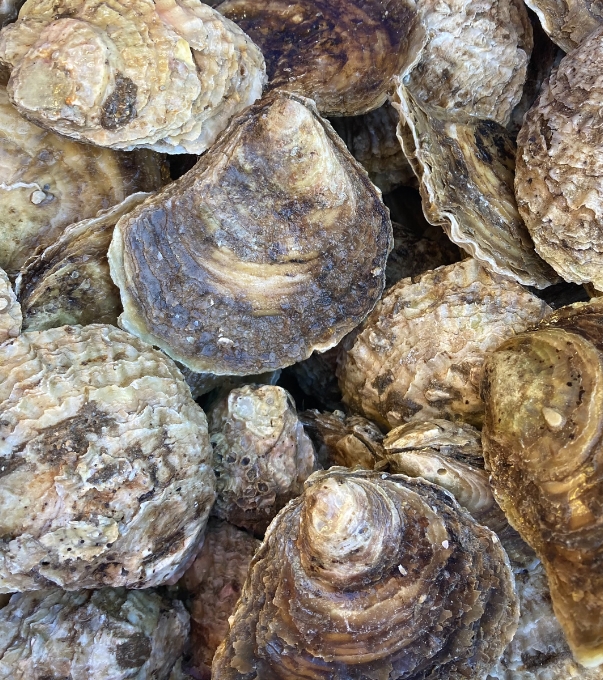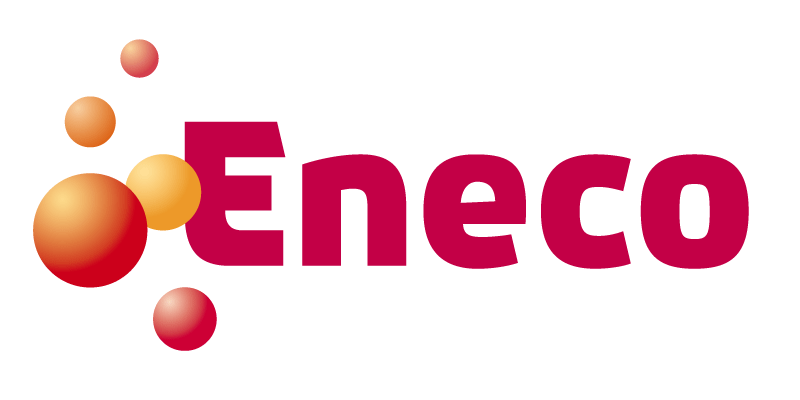For this project, The Rich North Sea collaborated with Eneco and Van Oord to improve on the design of structures used in a previous pilot project focused on European flat oysters in offshore wind farms. With a newer, more stable oyster broodstock structure design, this project would answer how the structure performs on the scour protection around the monopiles in the Luchterduinen offshore wind farm in terms of stability, sediment coverage and oyster survival/reproduction, as well as in terms of practical placement, maintenance and costs.
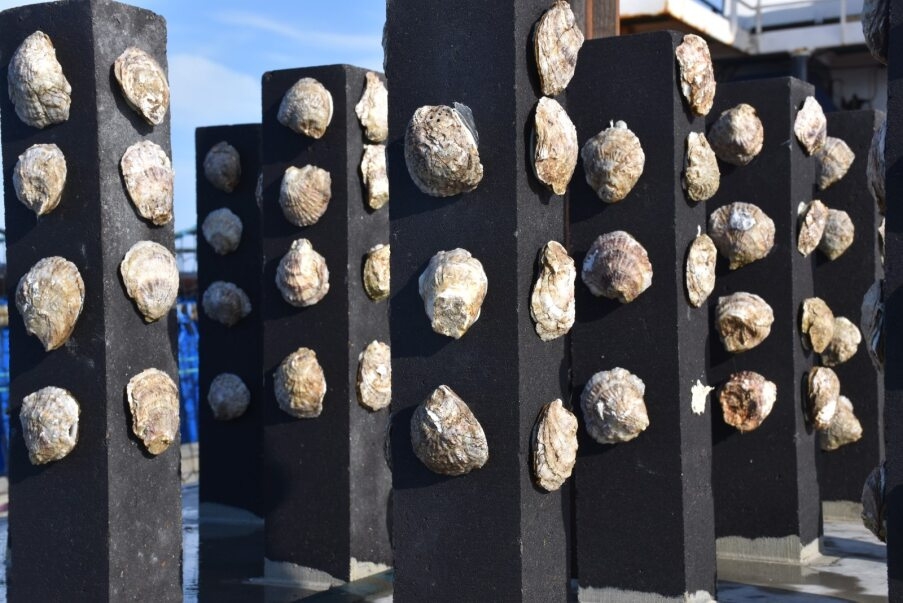
Methods
The Rich North Sea partnered with Van Oord (structural design and installation) and Eneco (offshore wind farm operator) to execute this project. The original pilot led to a new design: a concrete table with 16 vertical columns, with 250 oysters attached securely. Four structures were placed on to the scour protection layer of four offshore wind turbines.
Materials used:
- Broodstock structure, designed by van Oord. Following the findings of the pilot project Luchterduinen 1.0 and the current Oyster broodstock research in Borssele II/IV and V, the objective of this project is to test an improved outplacement method for live European flat oyster broodstock in OWF Luchterduinen.
- Living flat oysters, loosely distributed on the scour protection (800, May 2022)
- Living flat oysters, glued on the broodstock structures (1000, November 2022)
In 2024 an ROV (Deep Trekker) monitoring mission was conducted. Further monitoring is not currently planned. Possibilities for further monitoring are being explored through 2024.
Results
The first monitoring mission in 2024 with ROV proved the broodstock structures to still be in place, but very overgrown. In the video footage, overgrowth can prevent visibility to determine the amount of oysters in the structure, and it can difficult to determine whether the detected oysters are alive or not. However, the structure had minimal sediment coverage, proved stable, and was visible when monitored.
Tips and tricks
- Partners with shared goals and clearly defined roles across installing, monitoring, and decommissioning can help the project to be smooth and straightforward.
- When using a crew transmission vessel, it is sometimes more efficient and economical to combine research with the crew’s planning. If you can have your own vessel, this can be much easier to run on your own schedule.
- Include a ‘definition of success’ in the monitoring process: for example, when are structures ready for scaling, when to apply other designs, or use different testing methods.
- A backup plan is helpful to have when monitoring with an ROV. Monitoring with divers can be easier, but is often not allowed due to safety reasons. In this project, the ROV imaging was grainy, and it was difficult to see through overgrowth on structures to know how many oysters were there and if they were alive.
Decommissioningg is planned in 2028, and documents required include a work method statement and risk analysis.
All about oyster broodstock structure placement
Learn more about the broodstock structures and their installation in the Luchterduinen Offshore Wind Farm.
Products used on this project
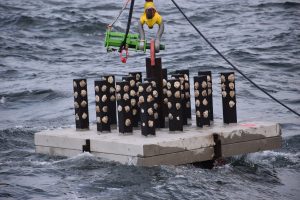
Oyster Broodstock Structure Luchterduinen
Van OordThis broodstock structure consists of a concrete slab and vertically placed concrete poles where flat oysters can be glued. The structure has a lifting eye, and can be placed on scour protection or other stable surfaces. No maintenance is needed. Oysters are at a low risk of suffocating by sedimentation, but are exposed to biofouling and potential predation.
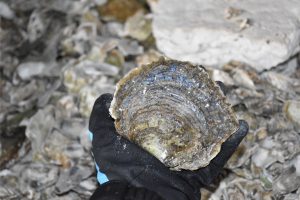
Live adult European flat oysters
Some species need a lift to get back to their original habitats. Flat oysters used to inhabit large parts of the North Sea, but have been pushed to extinction in many places. Releasing adult oysters into the wild can boost the natural population. For more information on living flat oysters, please refer to the oyster guide.
Let's connect
Ready to dive into nature enhancement? Send us an email to share your questions, feedback, or projects you’re working on.
